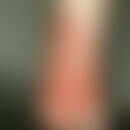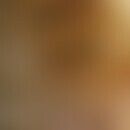Synonym(s)
Achorion beautifulleinii
HistoryThis section has been translated automatically.
Schönlein, 1839; Remak, 1842
DefinitionThis section has been translated automatically.
Anthropophilic dermatophyte of the genus Trichophyton.
You might also be interested in
General informationsThis section has been translated automatically.
Behaviour in culture: Slow growing colonies with a moist, deeply grooved, honeycomb-like texture, grey to yellowish-orange surface and waxy consistency. Irregularly twisted central elevation, protruding 1-4 mm above colony level with peripheral radial folding. Back: Yellowish to greyish colour.
Occurrence/EpidemiologyThis section has been translated automatically.
Spread worldwide, almost exclusively in rural areas with poor hygienic conditions or malnutrition. Commonly found in Africa or Eurasia; rarely in Central Europe. Mostly infestation of individual families or family groups.
ClinicThis section has been translated automatically.
S.u. Favus.
MicroscopyThis section has been translated automatically.
- Hyphae: Numerous, hyaline, growing finger-like, strongly branched, often dichotomous branching ("chandelier", "nail head")
- Macroconidia: Rare (may be absent), 2-3 chambers, smooth-walled, thin-walled to thick-walled, cylindrical or cigar-shaped.
- Microconidia: Numerous, unicellular, usually round or pyriform.
- Chlamydospores: Numerous, solitary or cluster-like arranged, mostly 1-3 chambers, low developed conidiophores.
LiteratureThis section has been translated automatically.
- Botterel F et al (2001) Dermatophyte pseudomycetoma of the scalp: case report and review. Br J Dermatol 145: 151-153
- Cecchi R et al (2003) Favus due to Trichophyton schoenleinii in a patient with metastatic bronchial carcinoma. Br J Dermatol 148: 1057
- Devliotou-Panagliotidou D et al (2001) Tinea capitis in adults during 1981-95 in northern Greece. Mycoses 44: 398-400
- Remak R (1842) Successful vaccination of the favus. Med Z 11: 37
- Schönlein JL (1839) On the Pathogeny of Impetigines. Müller's Archiv für Anatomie, Physiologie und wissenschaftliche Medicin (Berlin) 1839: p 82
- Seeliger HP (1985) The discovery of Achorion schoenleinii. Facts and stories (Johann Lucas Schoenlein and Robert Remak). Mycoses 28: 161-182
- Velho GD et al (2001) Guess what! Tinea capitis by Trichophyton schoenleinii. Eur J Dermatol 11: 481-482
Incoming links (4)
Beautiful lilies achorion; Little beauty, johann lucas; Trichophytia, deep generalized; Trichophyton;Disclaimer
Please ask your physician for a reliable diagnosis. This website is only meant as a reference.




